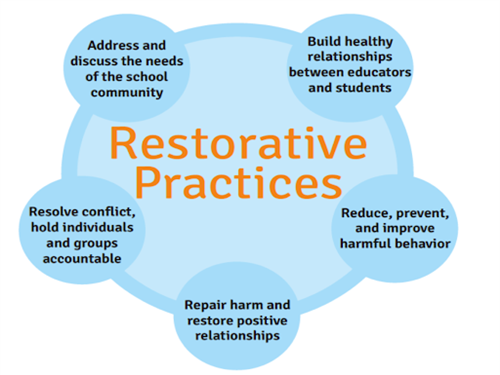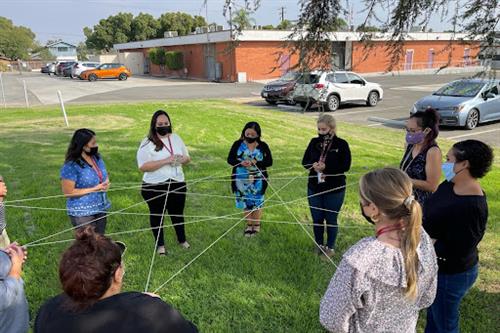-
Restorative Practices is a set of practices that challenges us to develop solutions from our authentic selves.In society, an RP approach opens up possibilities for addressing harm and wrongdoing that don’t involve criminalization. In educational settings, RP provides alternatives to punitive discipline, which in turn promotes positive school culture including safety, emphasis on learning and creativity, respect, and responsibility.

-
In RUSD, Restorative Practices (RP) is a set of principles and practices inspired by indigenous values used to build community, respond to harm/conflict and provide individual circles of support for students. By building, maintaining and restoring relationships between members of the entire school community, we help to create an environment where all students can thrive. Our program is implemented through a 3-tier, school-wide model.
-
Tier 1: Community Building (Prevention/Relate)
Tier 1 is characterized by the use of social emotional skills and practice (classroom circles) to build relationships, create shared values and guidelines, and promote restorative conversations following behavioral disruption. The goal is to build a caring, empathetic, intentional, and equitable community with conditions conducive to learning.
Tier 2: Restorative Processes (Intervention/Repair)
Tier 2 is characterized by the use of non-punitive responses to harm/conflict such as harm circles, mediation, or family-group conferencing to respond to disciplinary issues in a restorative manner. This process addresses the root causes of the harm, supports accountability for the offender, and promotes healing for the victim(s), the offender, and the school community.
Tier 3: Supported Re-Entry (Individualized/Re-Integrate)
Tier 3 is characterized by 1:1 support and successful re-entry of youth following suspension, truancy, expulsion or incarceration. The goal is to welcome youth to the school community in a manner that provides wraparound support and promotes student accountability and achievement.Use non-blaming restorative questions when discussing any behavior or issue with students.

- What happened and what were you thinking at the time?
- What have you thought about since?
- Who has been affected by what happened? How do you think they’ve been affected?
- What about this has been the hardest for you?
- What do you think needs to be done to make things as right as possible?

